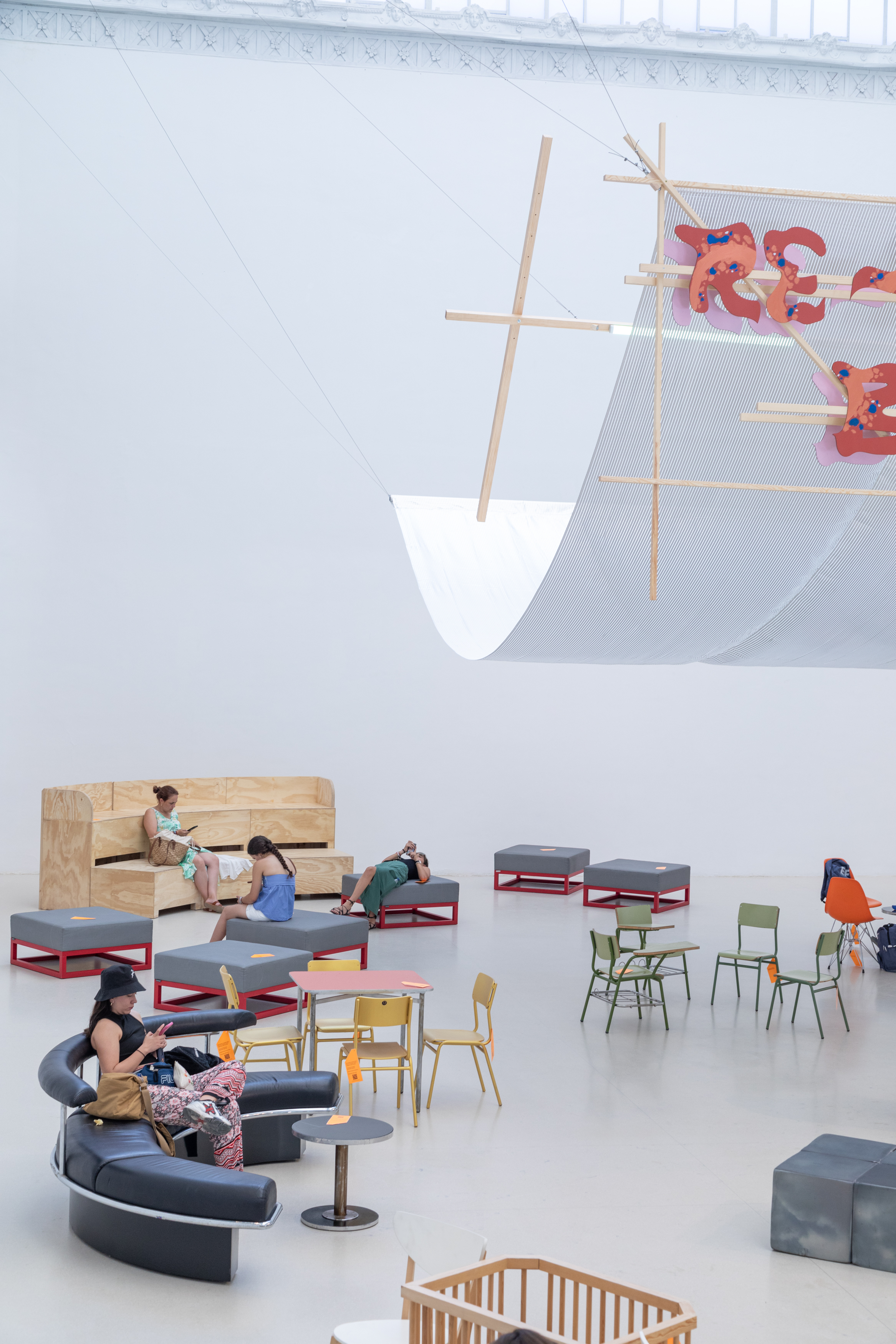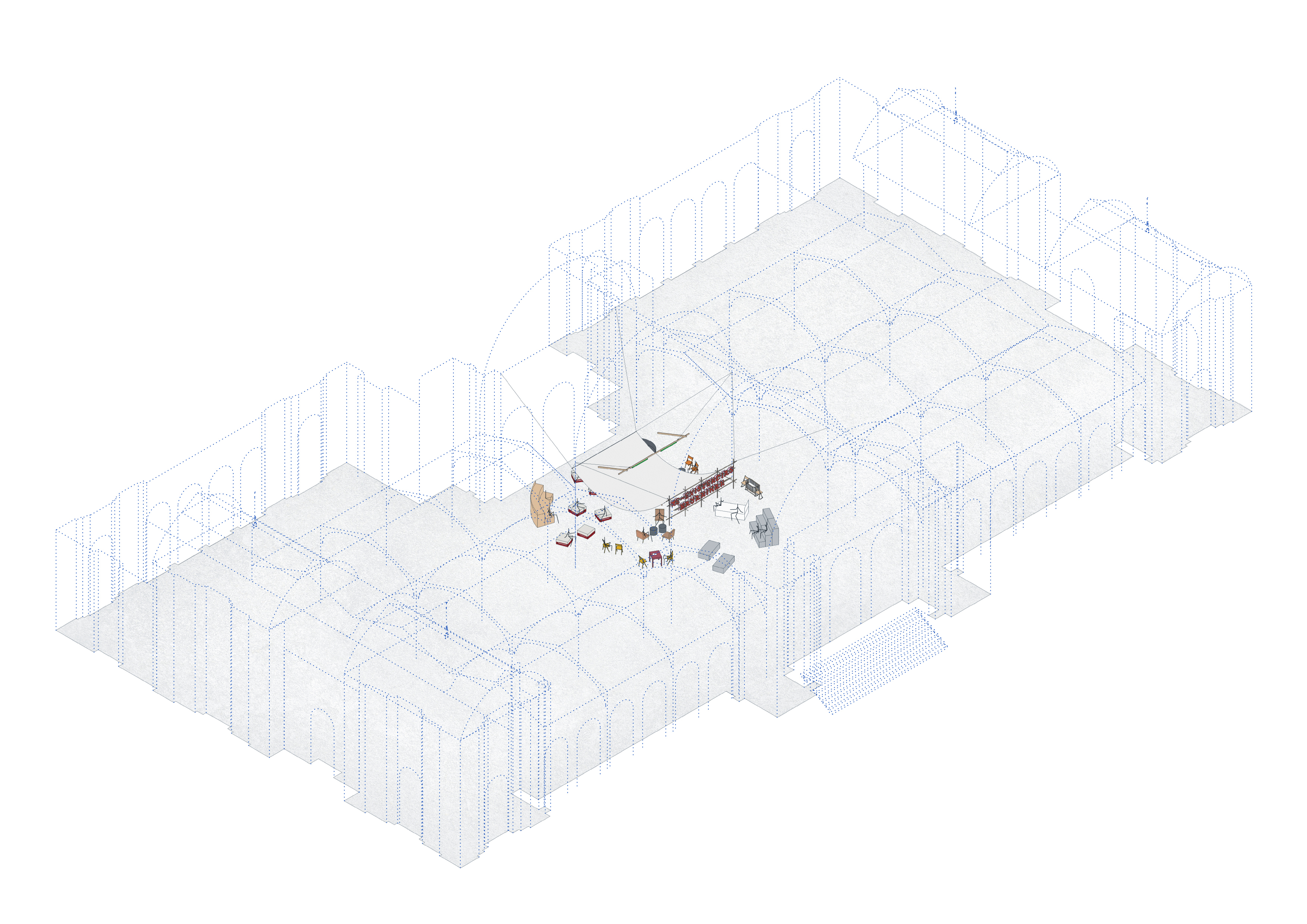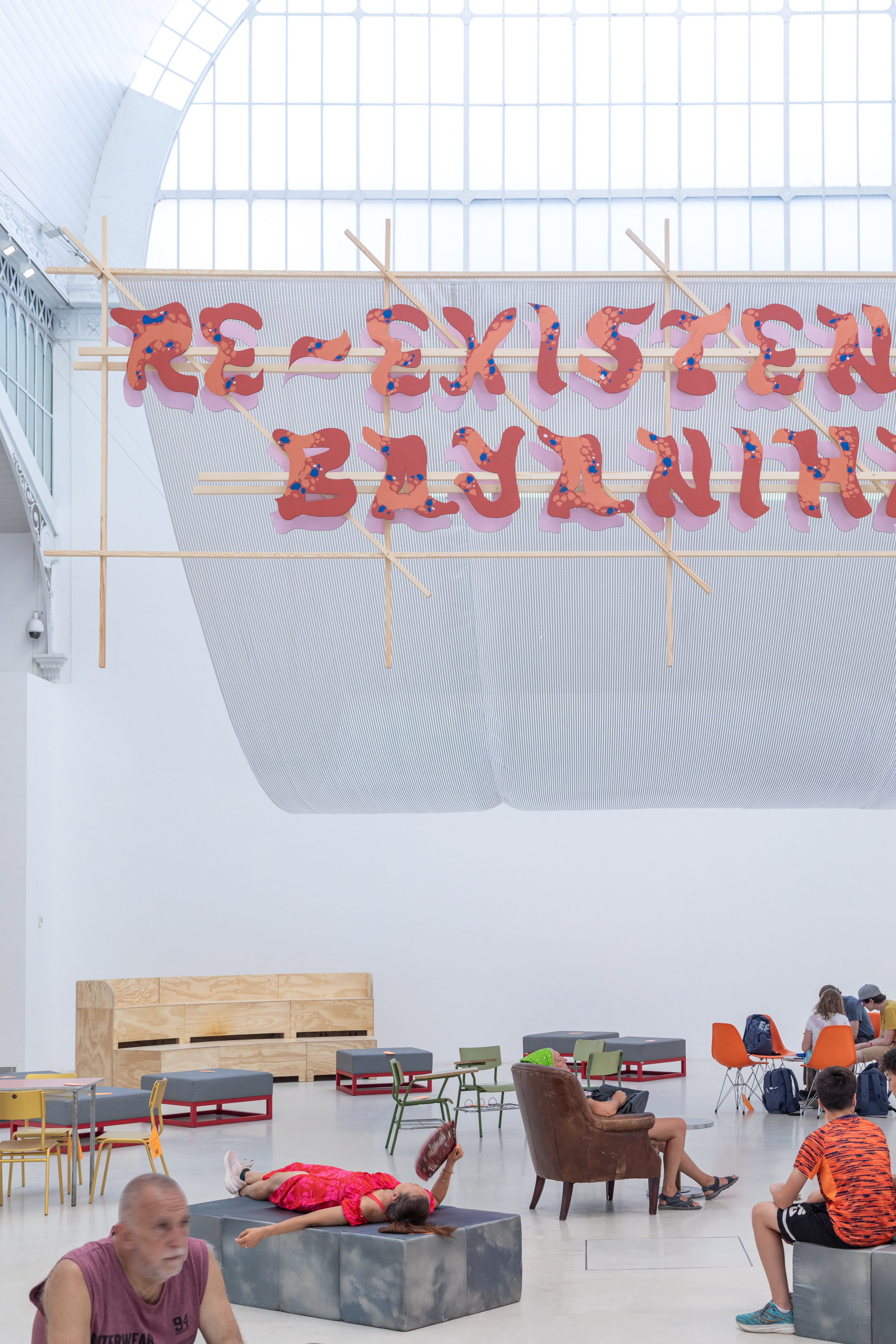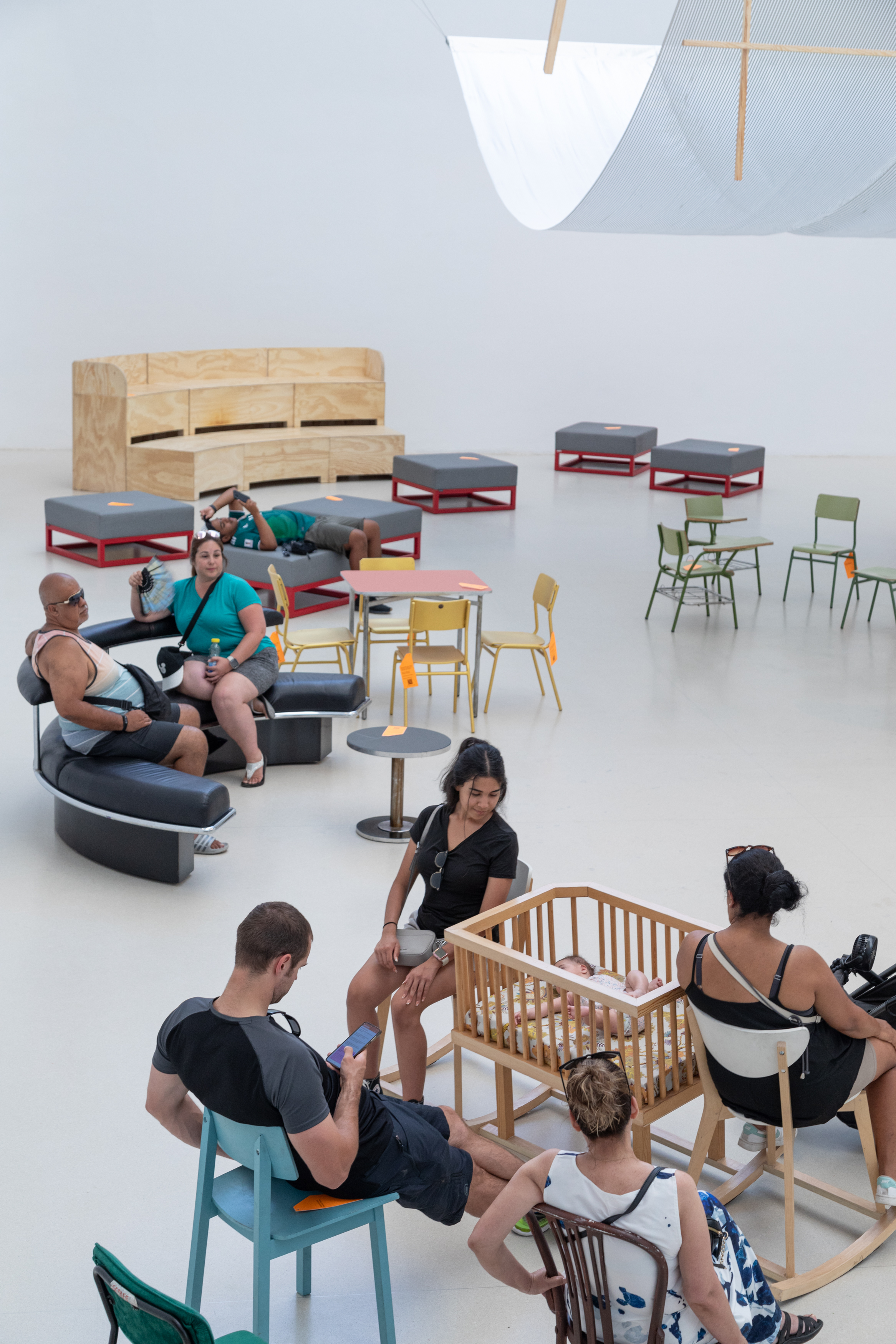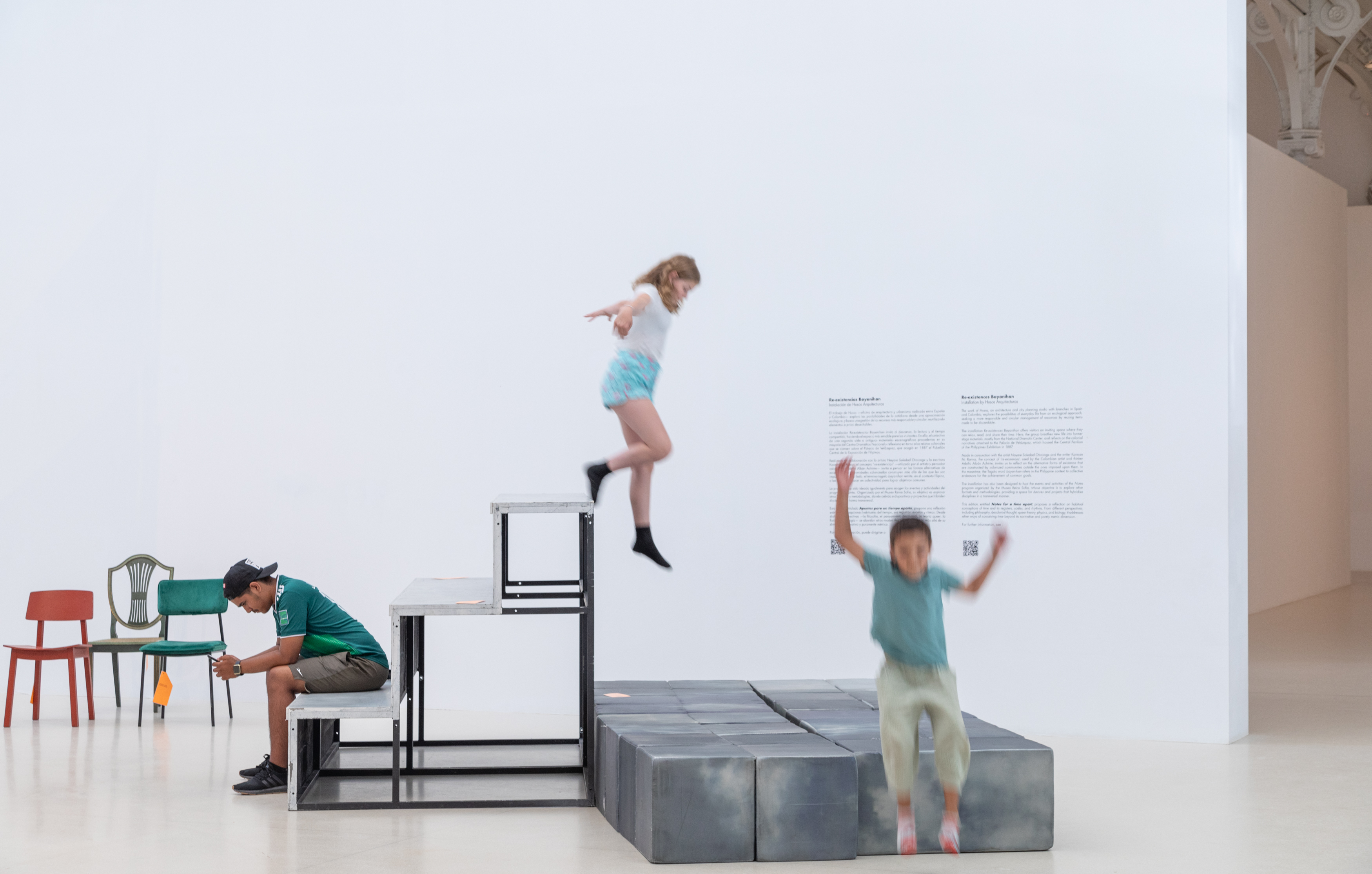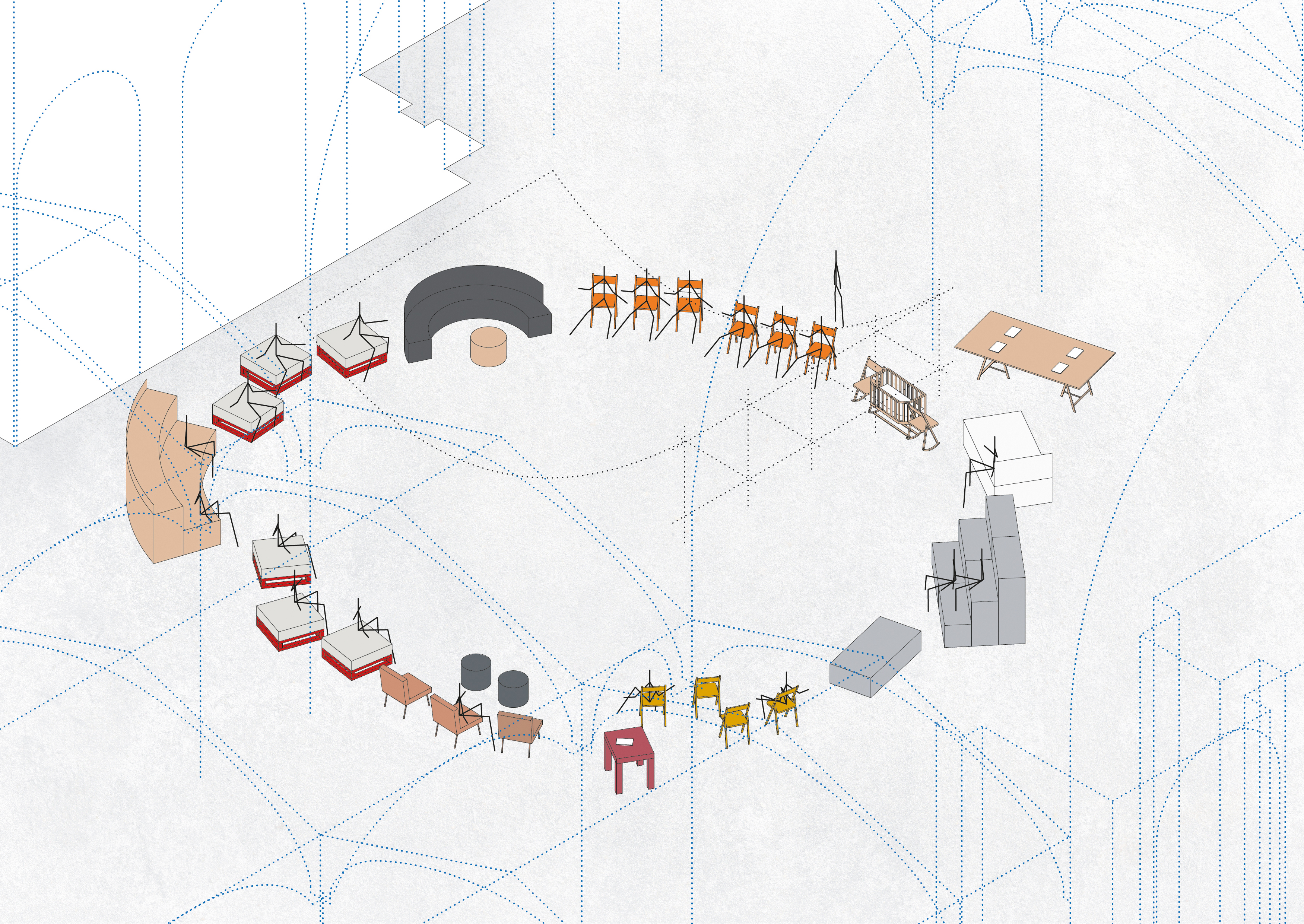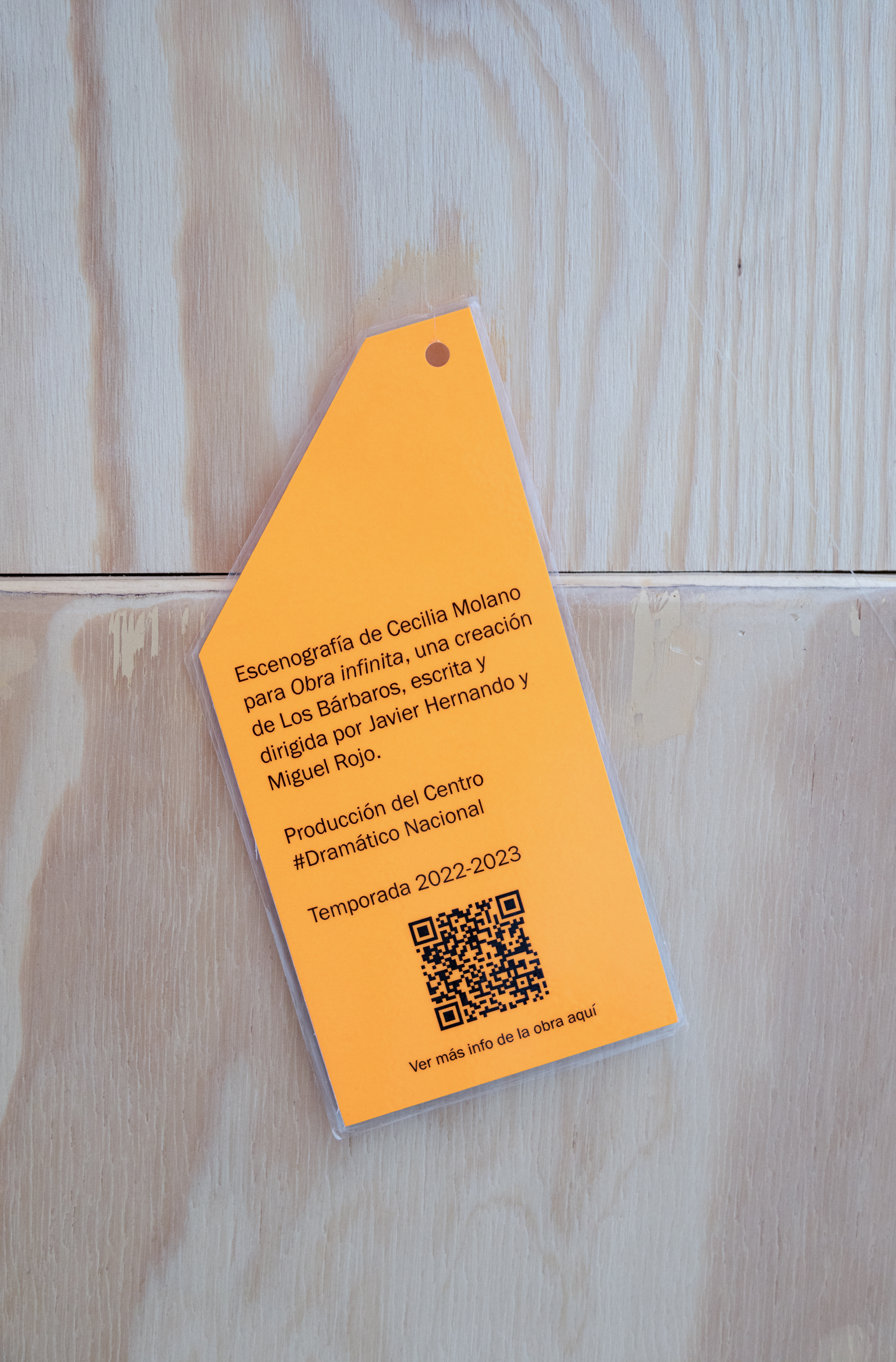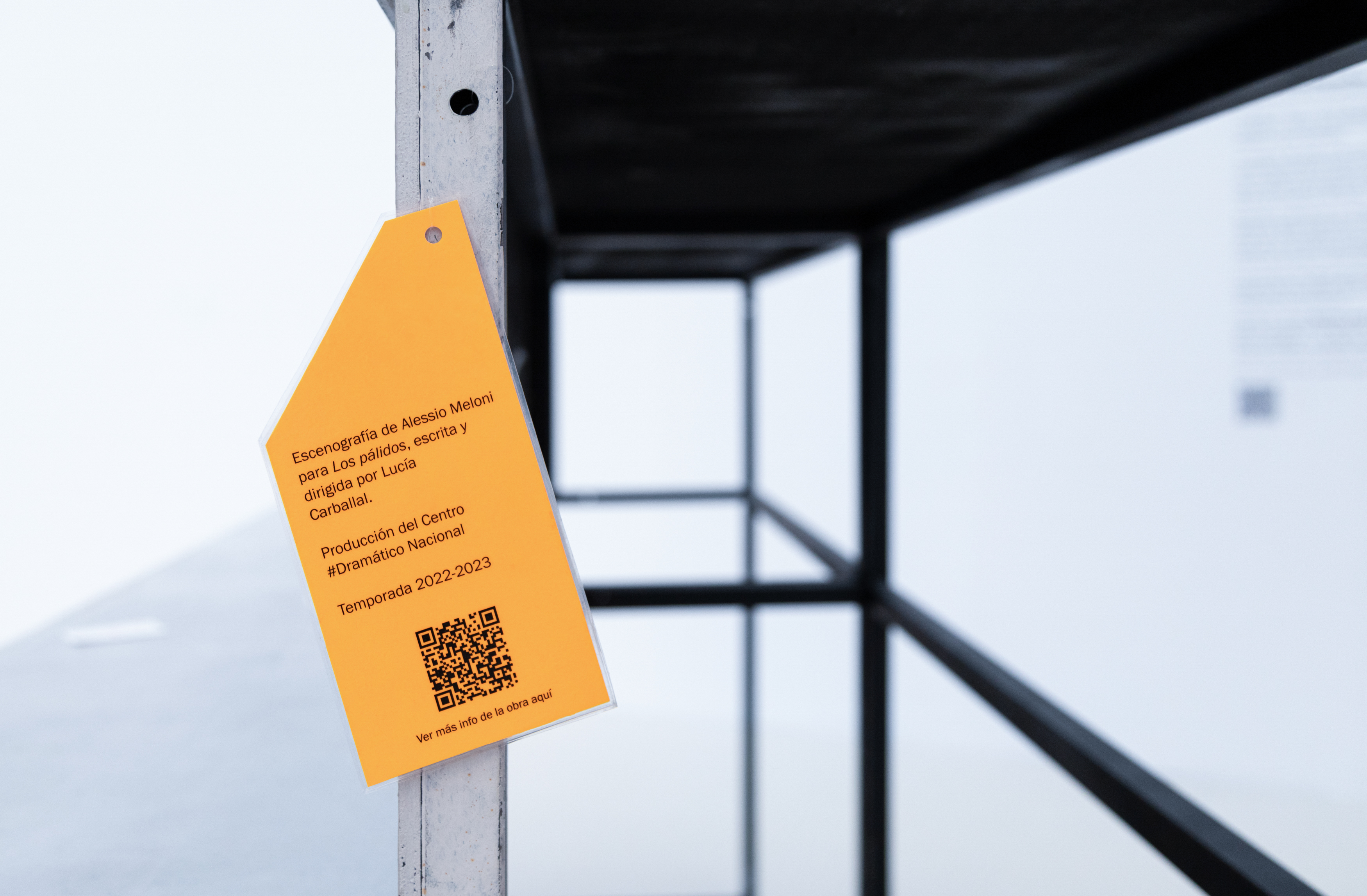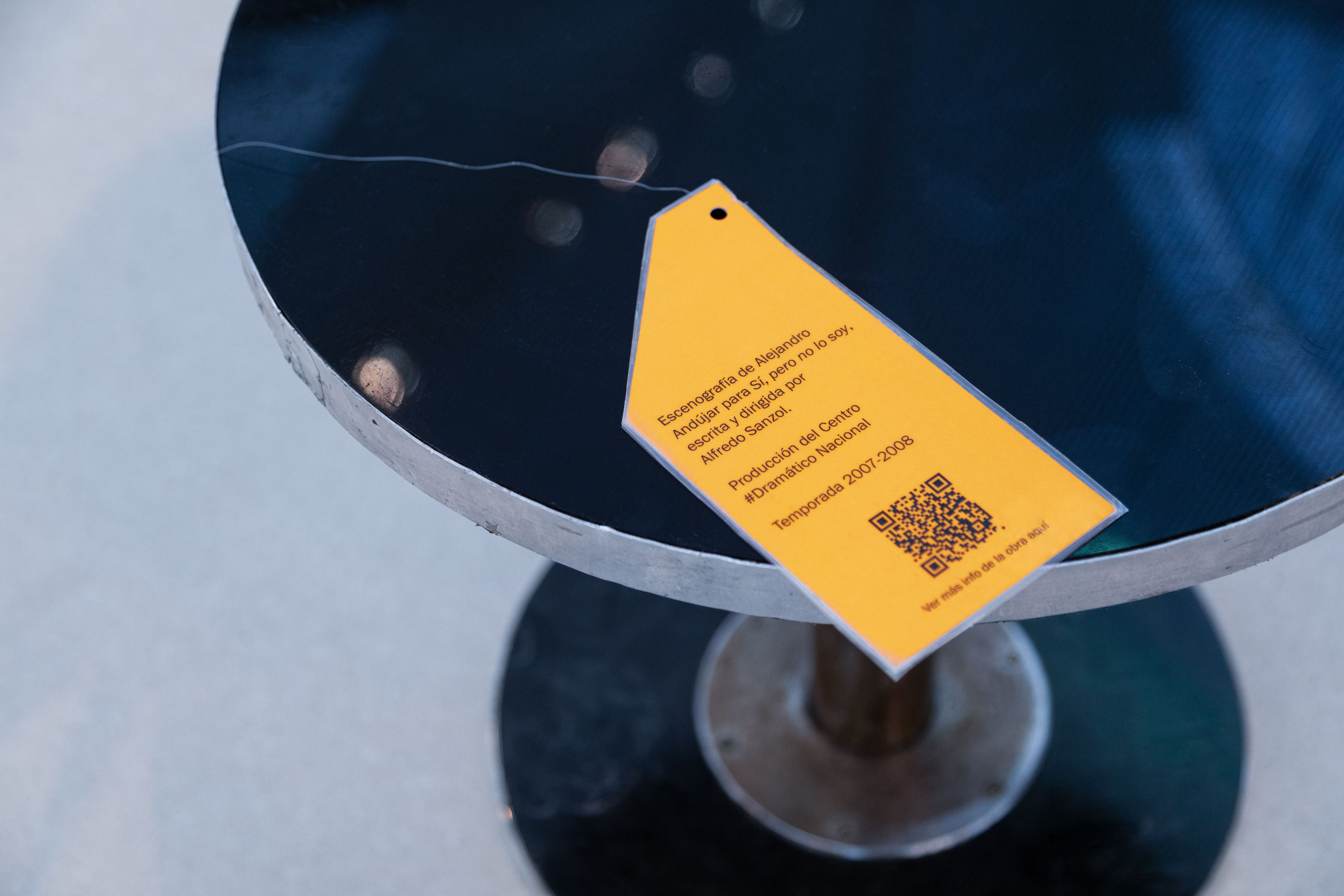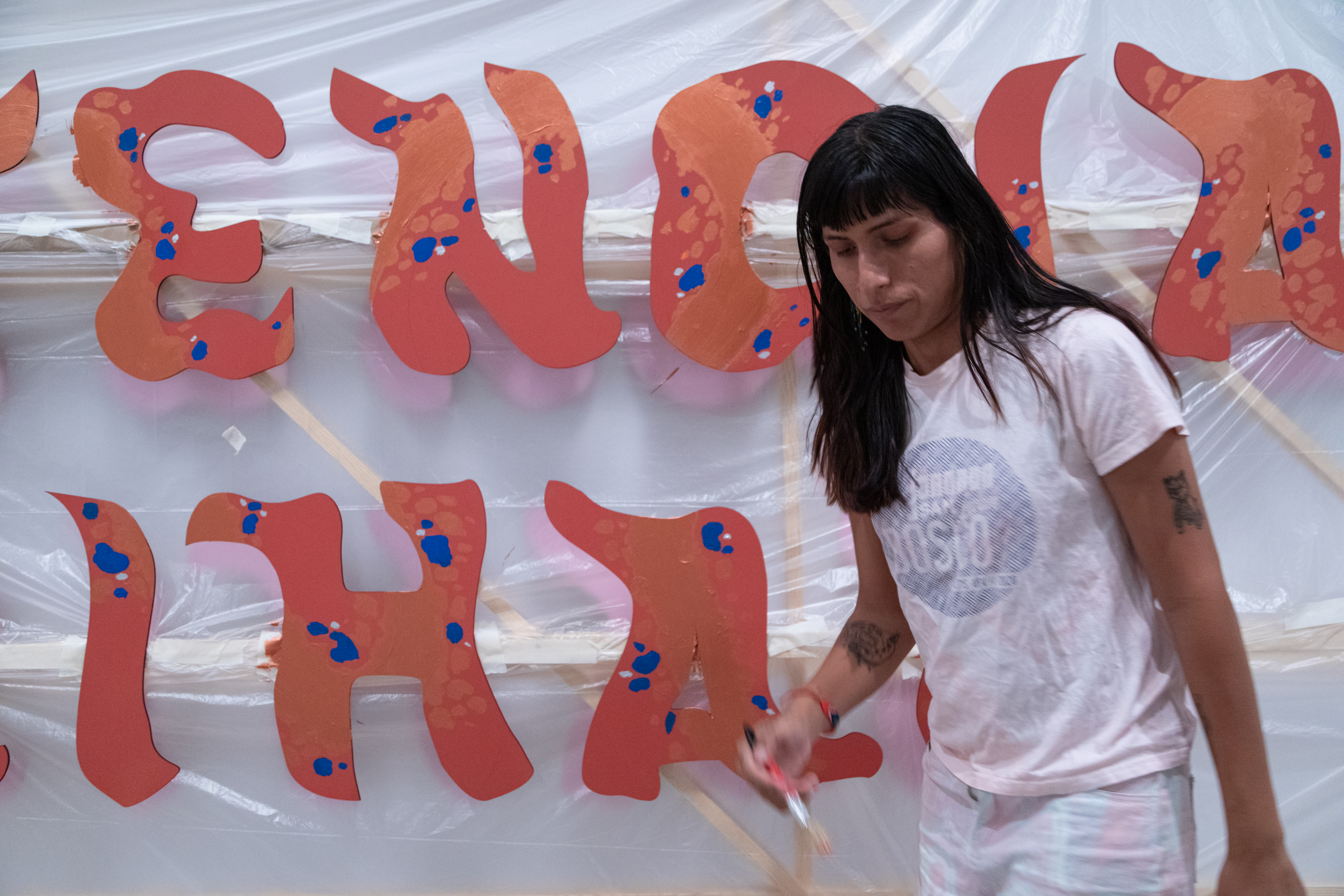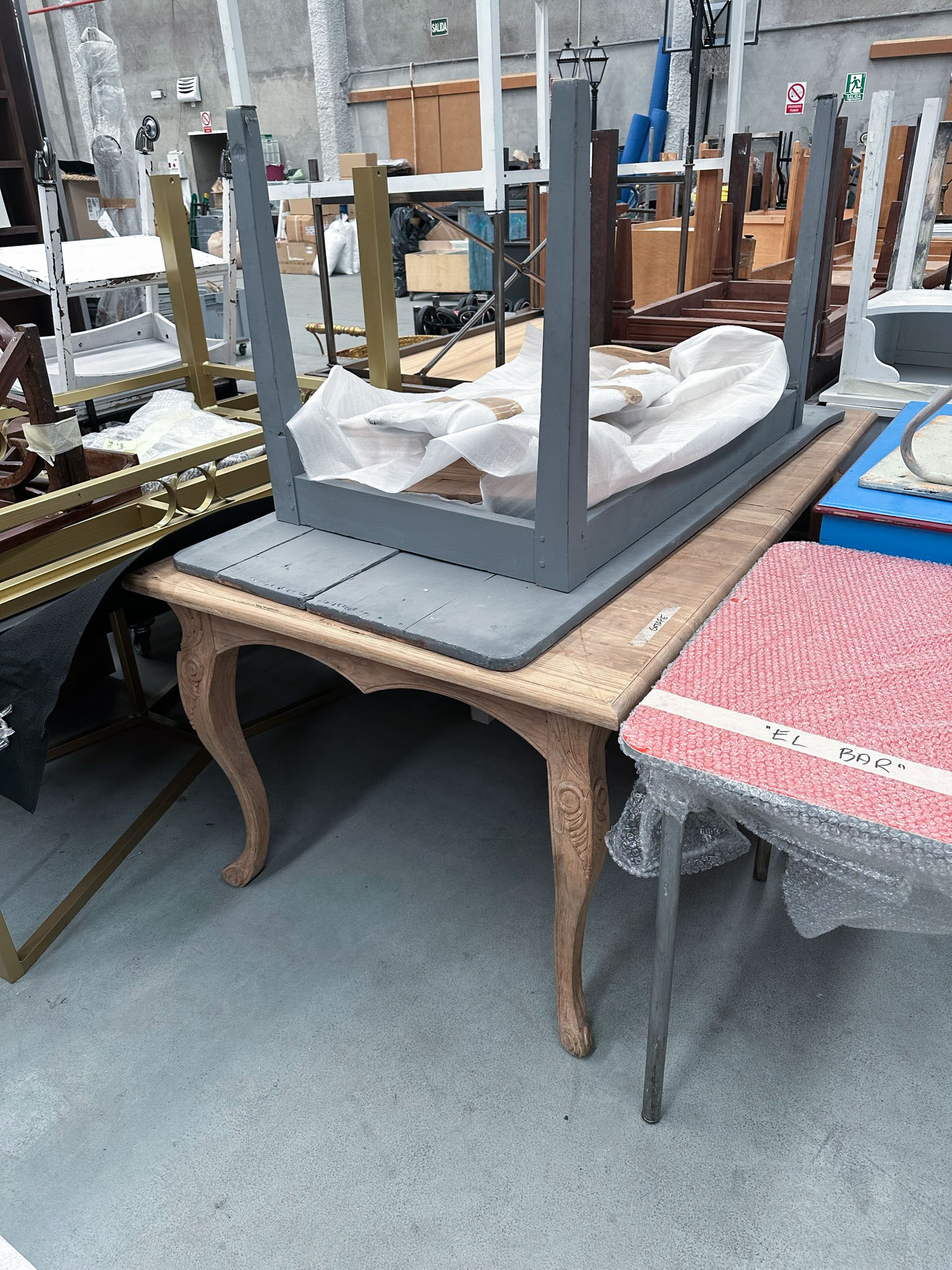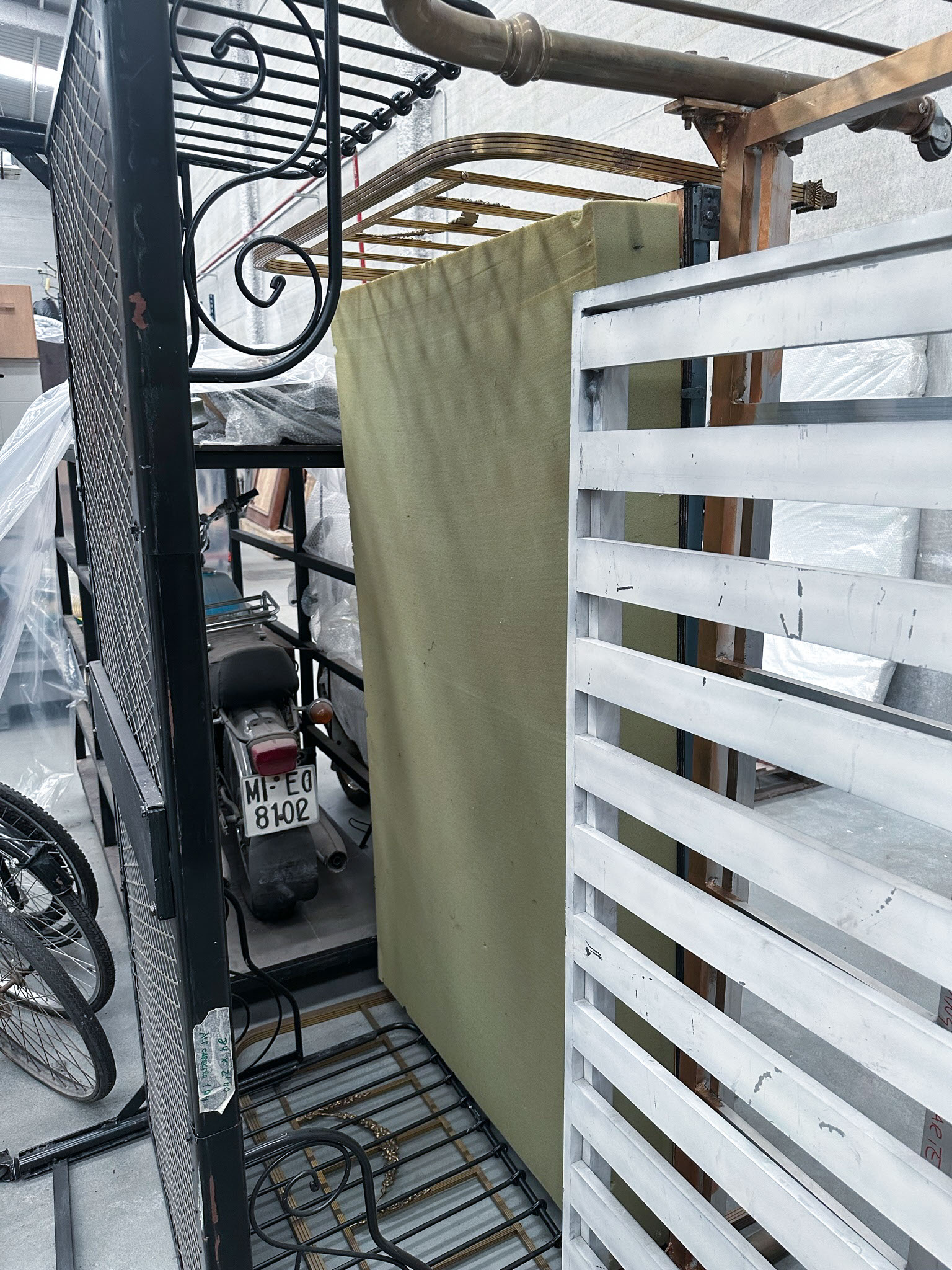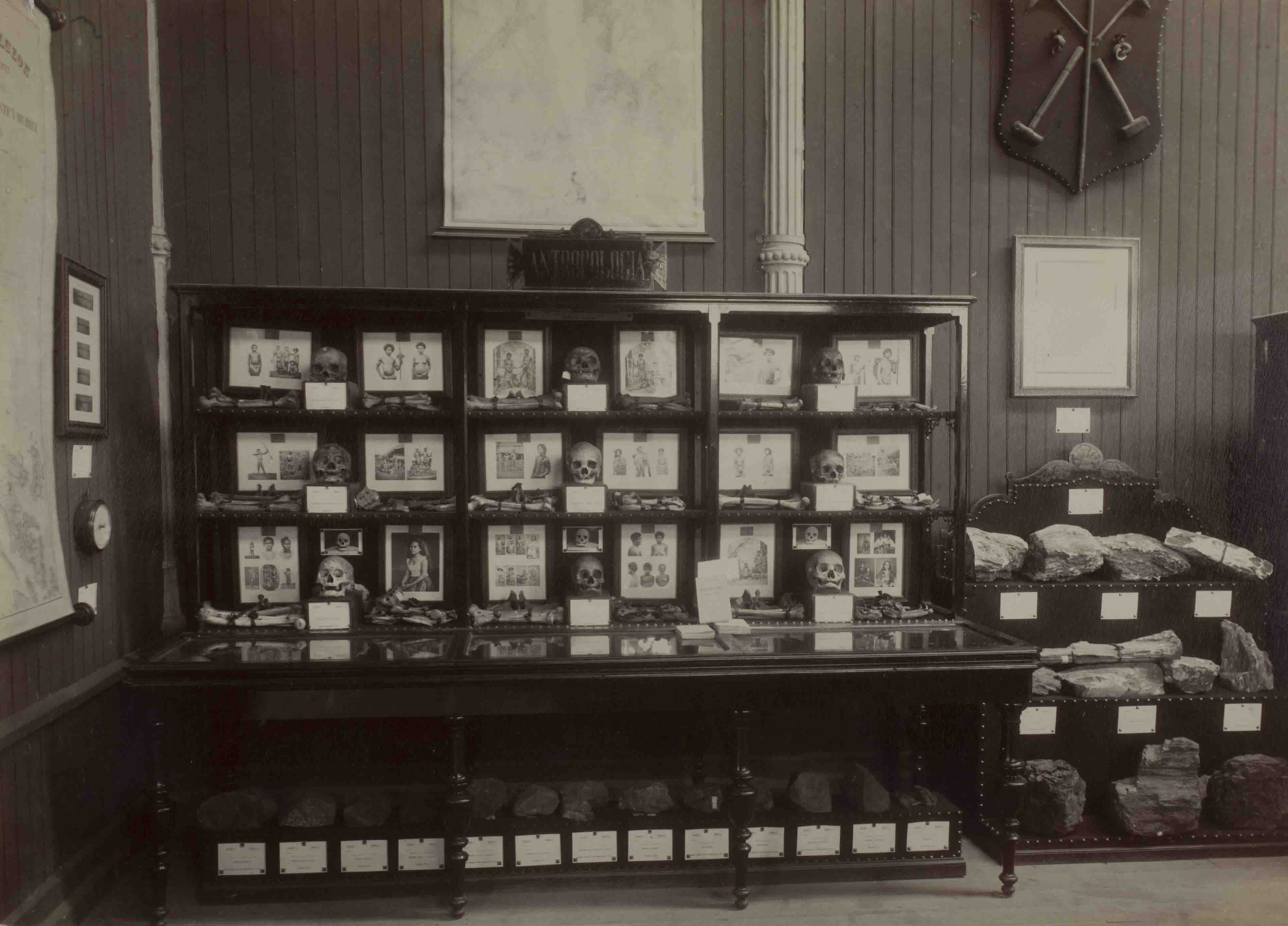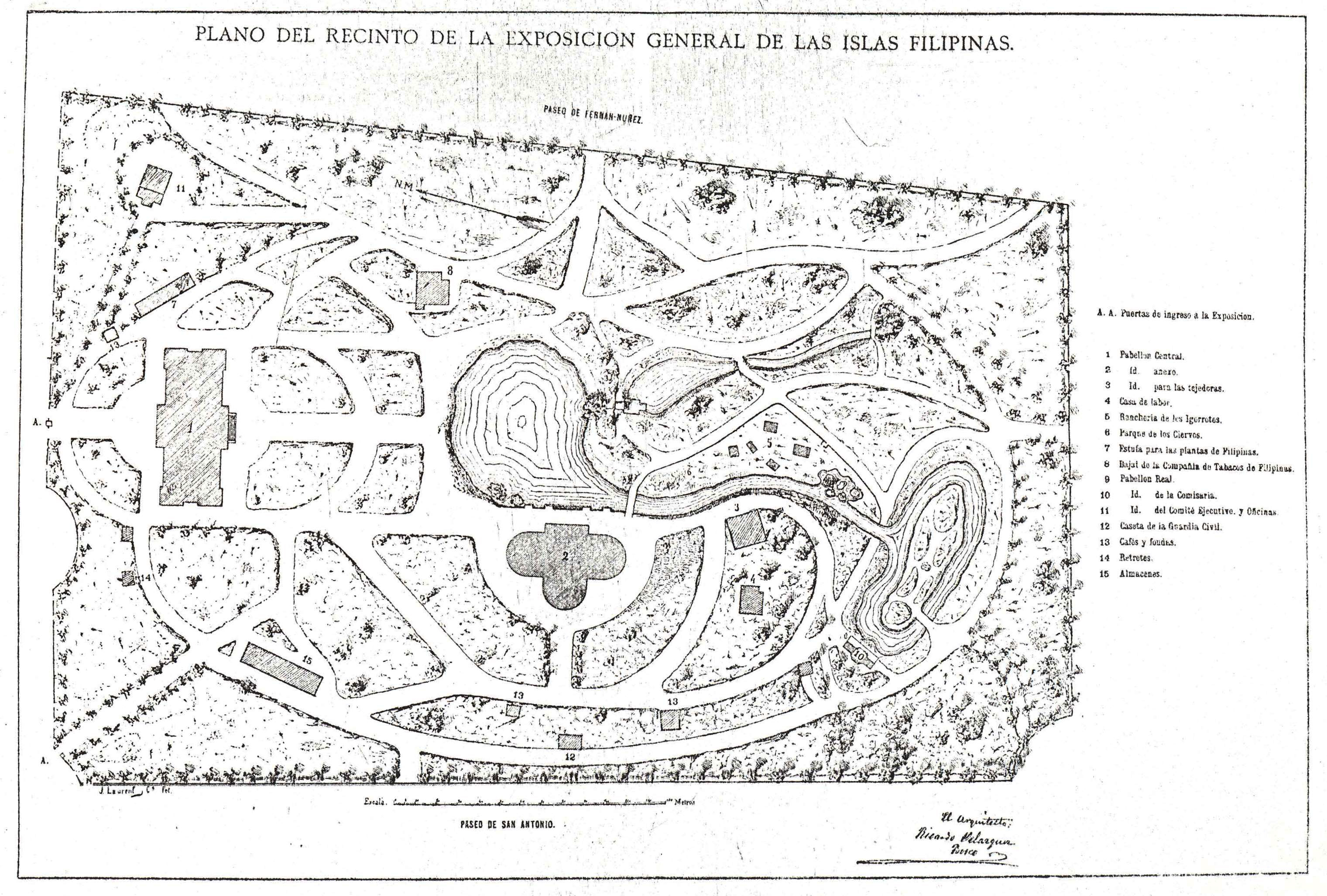> Re-existencias bayanihan
Museo Nacional Centro de Arte Reina Sofía
Madrid, 2023
This
project involves temporarily adapting the interior of the Velázquez Palace for
non-exhibitory uses: as a relaxation space, to host reading sessions,
performances, and other activities under the “Apuntes” initiative of the
MNCARS. “Apuntes” was conducted in the second semester of 2023 and revolved
around the concept of “time”. As
northern Andean
migrant architects living
in Madrid, the Velázquez Palace, with its colonial history (it served as the
main venue for the Philippine Exhibition in 1887, which was then part of the
Spanish empire), holds a special personal and professional significance for us.
In response to the central theme of “Apuntes”, we proposed a space that would
foster a dialogue between the activities to be held in the palace and the
colonial eras that permeate this building, many of which are still relevant
today.
Regarding
the reuse or recycling of stage sets, it involves giving a new purpose to
objects typically used temporarily, working from a more responsible and
circular material management perspective. It also involves questioning an
understanding of the concepts of “time” and “us” in the design processes that,
from our perspective, tends to be narrow, and understanding the work of design
through a broader “us”, constructed over an extended period. In this case, it
is a time that articulates alongside the different designers of the sets that,
once recycled, participate in the project, as well as the gathering of a poet,
an artist, and architects to design the name of this space.
For
each of the scenic pieces, we prepare a label with information about its
designer, the theater production in which it was used, and its authors, as well
as a QR code to access more information about it. The sign is accompanied by a
cover that redraws the monumental geometry of the palace's interior, fostering
a domestic and approachable atmosphere.
This
proposal worked closely with a proposal of decolonial actions for the “Apuntes”
program, which was developed and coordinated by Abdiel Segarra and Karessa M.
Ramos, alongside Husos, among others.
Team:
Space Design: Husos Arquitecturas / Text and Graphic Art: Nayare Soledad
Otorongx, Karessa Ramos, Husos, and others / Photography: Impresiones
Cotidianas / Special Thanks: Abdiel Segarra and Revista Sin Norte, Sabrina
Boutselis, Anna Fux, Efraín Rodríguez, and Fran Cabeza de Vaca.
